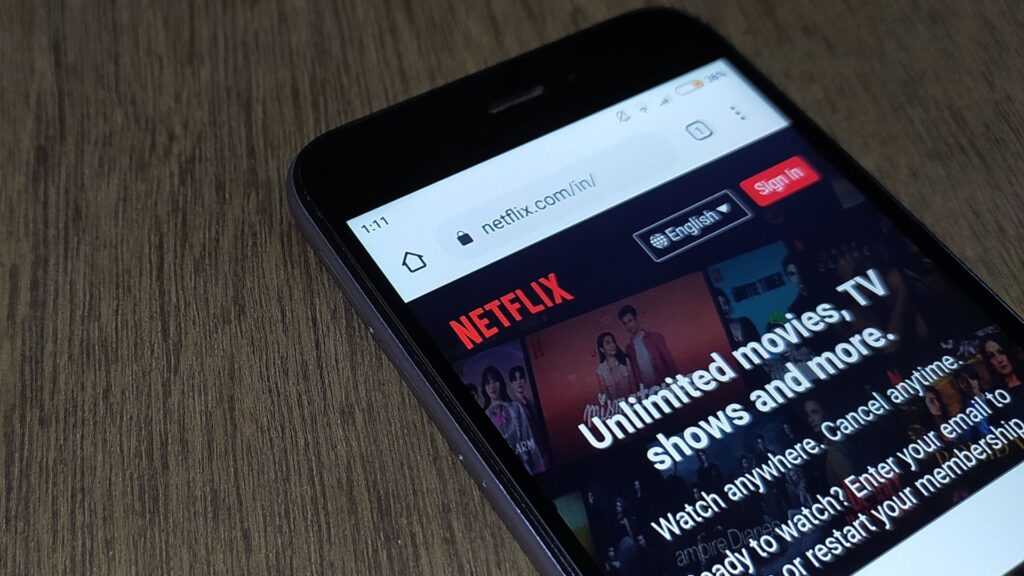
User activation is vital to the success of SaaS companies as they depend on consistent engagement and product use. To thoroughly explain this information, we will utilize streaming companies as an example. Streaming services have become a fundamental part of our daily lives, and the number of platform providers is increasing rapidly. However, with this growth comes increased competition in the streaming services industry, making it essential for these companies to focus on activating users to ensure retention and long-term growth. In this article, we will discuss the phases and benefits of user activation, and more.
5 Phases of User Activation

You may be wondering, “What is user activation?” User activation refers to the process of getting users to engage with and make use of a product or service, typically through onboarding, education, and other strategies designed to increase user adoption and retention. Activating users is crucial for video streaming products because it determines whether a new user will become a long-term, engaged customer or churn shortly after signing up. Activated users are more likely to use the service regularly and are more likely to be retained as long-term customers, resulting in higher customer lifetime value and a more sustainable business model. Additionally, they are more likely to refer additional customers to the service, which can lead to more user acquisition and further growth. User activation consists of five key phases, known as signup, setup, aha moment, habit formation, and ongoing engagement.
Phase 1: Signup
The signup phase is the first step in activating users and identifies who they are and how to communicate with them. It involves the user registering for an account or streaming subscription by providing basic information such as their name, email, and payment details. The user onboarding process should be simple and straightforward to minimize friction and maximize the chances of converting them into a customer. It is also important to consider data protection laws such as the General Data Protection Regulation or the California Consumer Privacy Act and ensure the user is informed about the data collection and usage practices of the service.
Phase 2: Setup
Once the customer has completed the signup process, they can move on to the setup phase. This is the process of configuring the user’s account and personalizing their experience when streaming videos. This may involve selecting their preferred language, setting up preferences or favorite devices, and linking other services such as social media accounts. The goal of this phase is to provide the user with a personalized experience that is optimized for their unique needs and customer behavior. A well-designed setup process can make the user feel valued and increase the chances of them becoming an engaged and active user.
Phase 3: Aha moment

The aha moment is one of the most important phases of activating users, especially for streaming services. This is the moment when the user experiences the core value proposition of the product for the first time. The goal of this phase is to make the user’s experience as positive and valuable as possible. This is usually achieved through a well-designed onboarding experience that highlights the unique features and benefits of the streaming membership. The aha moment should be memorable, enjoyable, and make the user feel that they have made the right decision in choosing the product.
Phase 4: Habit formation
Once the user has had a positive aha moment, they will start to form a habit around the service. This is when the user becomes activated and is more likely to continue using the streaming subscription. Habit formation is a critical part of this process as it increases the likelihood of the user becoming a loyal and engaged customer. To facilitate habit formation, streaming platforms should make it easy for users to access and use the service regularly. Providing intuitive navigation, personalized recommendations, friendly customer service, and regular engagement through notifications or emails will ensure accessibility for these services.
Phase 5: Ongoing engagement
The final step is to maintain the user’s activation status and engagement with the service by continuing to provide value and building a sustainable habit. This will ensure the subscriber continues to use the service within a defined period. To improve retention, it is important to optimize each step of the activation process and ensure that users have a positive experience from signup to ongoing engagement. Effective onboarding, providing a clear value proposition, and continually improving the user experience can all create engaging experiences for users and growth of your streaming services.
4 Ways to Improve Your Activation Rate

Streaming services can maximize user activation in numerous ways. This includes optimizing the signup and onboarding process, creating a compelling value proposition, improving the user interface, and leveraging A/B testing. We will review these steps below.
1. Optimize the Signup and Onboarding Process
The signup and onboarding process is the first point of contact between the streaming platform and its potential users. Providing a clear and simple process sets the tone for the entire user experience. A confusing or lengthy signup process can quickly deter users from using the service, leading to a high churn rate. This is particularly problematic for streaming platforms, as the competitive nature of the video streaming industry means that users have many alternatives to choose from. To optimize the signup and onboarding process, streaming companies can:
- Use social media signup. Allowing users to sign up with their social media accounts can make the process faster and more convenient.
- Provide a clear value proposition. Make sure users understand the value of the service before signing up.
- Personalization. Personalize the onboarding experience by recommending content based on the user’s interests.
2. Create a Compelling Value Proposition
A clear and compelling value proposition can set a streaming service apart from its competitors and provide users with a clear understanding of the benefits they will receive from using it. Lacking a clear value proposition can lead to users not fully understanding the service’s value, which can result in a high churn rate. To create a clear, concise, and easy-to-understand value proposition, streaming products can:
- Offer exclusive content. Having an entire streaming library full of exclusive content can be a powerful motivator for users to sign up and continue using the service.
- Create personalized content recommendations. Personalized content recommendations can help users discover new content and increase engagement.
- Provide a free trial. A free trial can allow users to experience the service before committing to a streaming subscription.
3. Improve the User Interface
The user interface is the primary means by which users interact with the service, and it must be designed in a simple and intuitive way. A confusing or difficult-to-use user interface can result in users not being able to find their desired content, leading to frustration and a high churn rate. Platforms must invest in creating a user interface that is both visually appealing and functional to remain competitive in the video streaming industry. To improve the user interface, companies can:
- Use simple and consistent navigation. A clear navigation process can make it easy for users to find the content they want.
- Provide clear and actionable calls to action. Encouraging users with methods such as offering them an affordable deal for the service can entice users to subscribe.
- Use visual cues. Visual cues, such as arrows, can help guide users to their desired location.
4. Leverage A/B Testing For Continued Insights
A/B testing involves randomly dividing a user base into two groups, with each group being exposed to a different version of the product or service. The user activation metrics that result from the test can then be used to determine which version is more effective in activating streaming service users. Through continual A/B testing and improving their product and service, streaming providers can optimize their activation process and ensure they are providing the best possible experience to their users. By understanding the needs and pain points of the users, the service can improve the user experience and increase the chances of activation. To leverage A/B testing, companies can test different versions of their:
- Signup forms. Determine which version results in a higher completion rate.
- Value proposition. Determine which version is more compelling to users.
- User interface. Determine which version results in higher engagement and retention.
Why is User Activation Important for Streaming Products?

Activation is critical and important for the video streaming industry because it determines whether a new user will become a long-term, engaged customer or churn shortly after signing up. If a user does not experience the value of the service, they are less likely to continue using the service and are more likely to cancel their subscription. Inactive customers can lead to a high churn rate and decreased revenue for the company.
It is equally important for video streaming products to not only activate new users but also keep them engaged and invested in the service. This is crucial for increased customer retention, as it helps to reduce churn and ensure that users remain invested in the platform. By keeping users activated and engaged through the analysis of user activation metrics, these platforms can build a loyal audience that is invested in the platform with increased customer satisfaction and long-term retention. Similarly, the growth of streaming services is vital to maintaining a competitive advantage in the ever-evolving market.
Benefits of User Activation for Streaming Companies

Activating users not only leads to increased engagement and product usage on streaming platforms, but also provides a number of other benefits. If a company has inactive customers and relies solely on new acquisitions to drive growth, it becomes difficult to predict and maintain consistent revenue. This can lead to instability in the business and make it difficult to plan for future growth and investments. However, a sustainable business model is built on the foundation of a stable and engaged user base. Activated users who regularly use the service and remain customers provide a consistent source of revenue and growth. This allows the company to utilize a more sustainable business model, by making informed decisions, investing in new features and content, and planning for the future with confidence.
Furthermore, activated users are more likely to enhance your marketing campaigns by referring others to the service because they have experienced the value of the service first-hand and have become engaged with the platform. In the world of streaming, recommendations from trusted sources can be extremely powerful in driving new acquisitions and growth. Word-of-mouth referrals can reach a wider audience than traditional marketing and advertising methods and can often be more effective in converting potential users into paying customers. This can help build brand awareness and increase the company’s reach.
In addition, activating users is critical for increased monetization in video streaming platforms. Activated users are more likely to upgrade their affordable plan to a paid subscription, purchase additional content and features, and remain as long-term customers. This is because they have a clear understanding of the value the service provides and are more likely to see the worth in paying for a premium experience. This increased engagement can lead to increased monetization opportunities, as the company can use targeted advertisements or upsell additional content to activated users.
Finally, activated users lead to increased customer satisfaction and increased brand loyalty. Focusing on activation and providing a positive experience for users can create a strong relationship with users, based on trust and a shared understanding of the value the service provides. Over time, this leads to increased brand loyalty and a more sustainable business model, as users are less likely to switch to a competitor and are more likely to remain loyal to the brand.
Case Study: Netflix

Netflix is a prime example of how a well-designed activation process can lead to increased customer satisfaction and loyalty. By making the user onboarding process simple and providing an easy-to-navigate user interface, Netflix is able to engage its users from the very beginning. The immediate exposure to tailored content that matches the user’s interests also helps to create an aha moment, where the user realizes the value of the service. This positive first impression is critical, as it sets the tone for the user’s future experience with the service.
Netflix continues to activate its users by regularly adding new content, improving the personalized recommendations, and continually updating its user interface to make it more user-friendly. All of these efforts contribute to maintaining high levels of user engagement, which in turn leads to increased customer satisfaction and loyalty. Netflix’s focus on maximizing this process has not only helped to retain its existing customers, but has also driven growth, increased monetization, and built a strong brand reputation.
Begin Improving Activation Metrics with Teknicks

By optimizing the signup and onboarding process, providing a clear value proposition, offering an easy and intuitive user interface, and leveraging A/B testing, companies can build a stable user base and achieve long-term growth and success. Growth agencies like Teknicks have experience working with streaming providers, and can assist you in your journey toward increased user engagement and retention. To learn more and get started, schedule a free growth strategy meeting today.